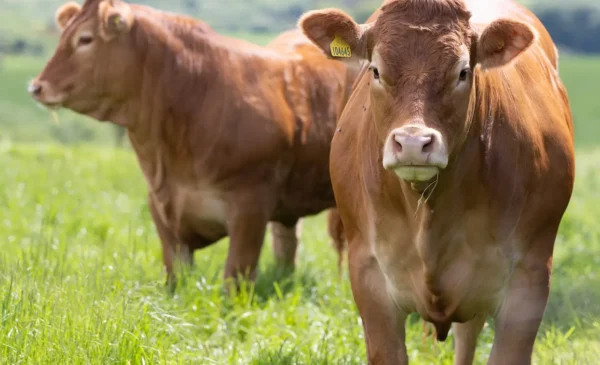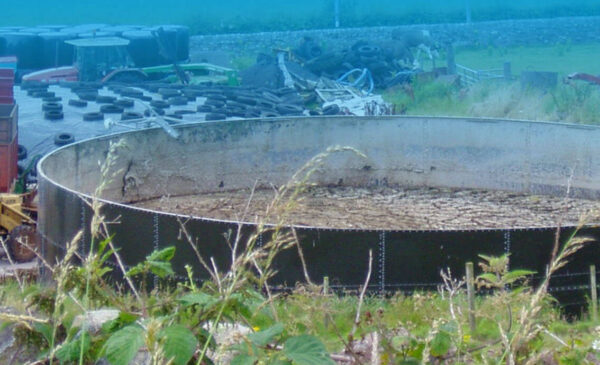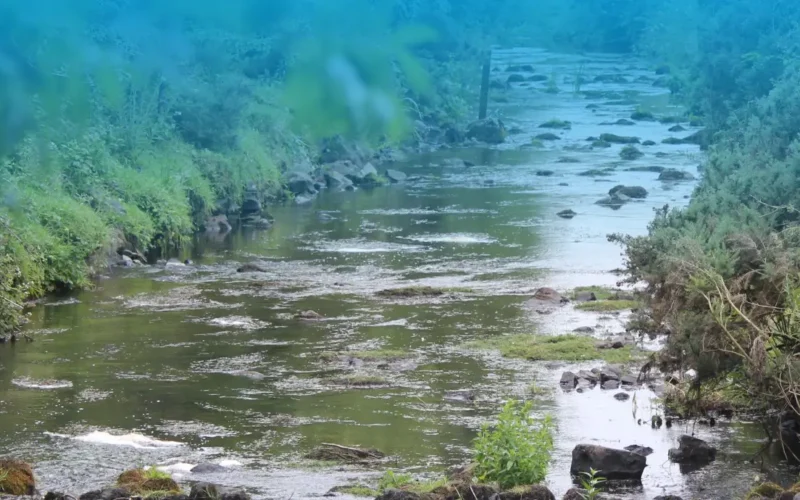How we manage land can have a big impact on surrounding water quality. Spreading operations and unchecked livestock access to burns and rivers have the potential to pollute watercourses with nutrients and faecal bacteria. The Diffuse Pollution General Binding Rules (GBRs) specify minimum distances for in-field activities in relation to rivers, burns, ditches, lochs and wetlands.
Section 3 of The 4 Point Plan looked at a Risk Assessment for Manures and Slurry (RAMS) map, helping to protect watercourses when applying slurry and manure. This section will help you identify practical ways to protect and enhance water quality on farms with grazing livestock and keep within the regulations.
What are the benefits to you and your business?
Looking after your water margins can:
- Keep you on the right side of the regulations.
- Improve farm biosecurity and livestock health. Keeping livestock out of water can reduce the risk of stock contracting or spreading water-borne diseases to other animals up and downstream. Keeping stock out of wet, boggy areas can also reduce their risk of exposure to liver fluke.
- Protect your land. Preventing poaching will reduce soil loss and further erosion.
- Allow plant growth, which in turn could:
- Act as an effective barrier or buffer strip to prevent or reduce diffuse pollution entering the water.
- Improve bank-side stability.
- Reduce flooding risks.
- Increase beneficial insect and wildlife populations.
- Provide shelter for stock, benefitting production.
Taking a closer look
Livestock use rivers and burns for a variety of reasons; to drink, to cross to neighbouring grazing, and for shelter or shade, depending on the topography or vegetation (for example making use of shade and shelter from trees growing next to the burn). However, unchecked livestock access can cause problems, both for livestock and other water users. Repeated livestock traffic will lead to poaching, soil erosion and loss of farmland. Stock will dung directly into the water introducing faecal bacteria which can transfer disease to other livestock and downgrade water quality. Faecal contamination is a real issue for the quality of our designated bathing waters, which are routinely monitored, and water quality status reported.
Practical ideas
Buffer strips
A fenced buffer strip next to the water, known as the water margin, can prevent or restrict stock access to watercourses around the farm. This will prevent poaching and allow plant growth. A network of simple buffer strips bordering ditches, burns and rivers on the farm could help provide an effective barrier to prevent or reduce diffuse pollution entering the water whilst also benefitting farm biodiversity, improving bank-side stability and lead to a more natural physical habitat with meanders which can help alleviate flood risk.
Depending on the width of a buffer strip, it could also help you to keep minimum distance of 2m back from the top of the bank during field cultivations or observe the minimum 10m distance from the watercourse when spreading slurry and manures (GBRs 19 and 20).
Mains fed troughs
Removing direct livestock access to watercourses and providing troughs fed by mains or borehole water supply can benefit your stock, as it may minimise exposure to infections and reduce disease transfer from neighbouring livestock or wildlife. Unchecked livestock access to watercourses could pose health risks for livestock too; for example parasitic infections from Cryptosporidium, fluke and worms or diseases caused by leptospirosis and E.coli can all be transferred by water leading to illness and loss of condition of stock. Your livestock may be healthy, but what about other animals drinking and dunging into the water further upstream?
Alternative watering systems
Where mains or borehole water is not practical, a number of options for lifting drinking water for livestock out of the burn are now available.
For more information about these Alternative Watering Systems and the construction of a suitable abstraction point, see Technical Notes TN665 and TN666, also available from either the Alternative Watering section of this website or the Farm Advisory Service. There are also a number of videos on both websites showing how other farmers have made use of alternative watering systems and reviews some of the pros and cons of the different setups.
Crossing points
Depending on the individual farm, livestock and vehicles could be crossing watercourses on a regular basis. This can quickly increase bankside damage, soil erosion and sediment build up further downstream. Over time, a gradual widening the crossing point could increase the loss of land through erosion. If surfaces are uneven or prone to debris it could increase the time cows take to get to milking, reduce time spent grazing or damage livestock feet and farm vehicles. A constructed crossing point may prove a viable alternative.
Depending on the design chosen, this work may need prior authorisation from SEPA. The Controlled Activities Regulations Practical Guide gives a good overview of what works require prior permission or contact your local SEPA office for more details.
Why is poaching a problem?
Bank erosion caused by poaching through regular livestock access can lead to significant soil loss, cumulating in loss of land. Once eroded, soil can accumulate downstream, potentially silting up channels and increasing flooding risk, discolouring and contaminating the water through soil particles, faecal bacteria and excess nutrients, and lead to negative effects for wildlife in both the water and those relying on these fish and insects as a food source. Introduced in 2008, GBR 19 (Keeping of Livestock) states that significant poaching must be prevented within 5m of any river, burn, ditch or loch as measured from the top of the bank and that livestock feeders must not be positioned within 10m of these features.
Should all watercourses be fenced off?
Fencing can be helpful, particularly on excessively poached sites and will assist the development of a buffer strip as grazing and trampling pressure is removed. Current legislation does not require watercourses to be fenced off or prohibit livestock access for drinking water; however, it does state you must prevent significant poaching and soil erosion by livestock within 5m of surface waters or wetlands (GBR 19). Although fencing off watercourses and providing mains-fed drinking troughs in all grazing fields would be the better option in terms of water quality and livestock health, it’s recognised that this is not always cost-effective or practical at all sites.
Points to consider
- Know the rules. Be aware of legal working distances from watercourses. You can view the ‘Know the Rules’ section of this website
- Identify soil erosion and poaching risks from livestock within 5m of a watercourse (GBR 19) on the farm and prioritise areas for action. Put measures in place to prevent significant poaching.
- Consider fencing off watercourses and supplying drinking troughs with mains water. At remote sites, investigate alternative drinking water sources rather than unchecked livestock access to farm watercourses.
- ‘Hot spot’ fencing may be a practical alternative to full exclusion. An electric fence, temporarily excluding stock from badly poached areas whilst providing an alternative drinking source could be all that’s needed to reduce poaching and allow vegetation to recover (this will still allow lambs access for shelter if required but losses by drowning will still be a risk, depending on local topography).
- Where practical, consider re-routing stock or vehicle crossing points over rivers or burns using a hard crossing point. Depending on the size of the watercourse and the intended crossing point, you may need to seek authorisation from SEPA5.
- Are livestock accessing the watercourse for shelter and/or shade? Maintaining hedging or tree planting away from the watercourse could also provide an attractive alternative, forming a shelterbelt which could also benefit livestock production.
- Reduce the time grazing stock are held in affected fields, or prioritising smaller numbers of lighter animals/younger stock may help to reduce poaching pressure in some cases.
- Where borehole or mains water fed troughs are impractical, consider alternative watering systems which pump water from the burn into drinking troughs. These systems can be powered by renewable sources. Anecdotal evidence suggests provision of additional drinking troughs reduces the number of stock going into the watercourse, as stock choose to drink from well sited troughs. In some cases, this action has been enough to reduce poaching risk and remove the need for fencing. Remember the 5m poaching rule when you are considering where to site alternative watering systems/drinking troughs.
- Siting of troughs, pumps and ring feeders should be carefully considered, as these areas are most prone to poaching and contamination by livestock dunging, and runoff from these areas can easily track back into watercourses. Livestock feeders need to be 10m away from a watercourse (GBR 19).
What you need to do next
On a copy of your farm map, take a note of areas on the farm with significant poaching next to watercourses and consider what steps you could take to reduce risks and comply with the regulations.
Review the watercourses on the farm:
- Identify sites where soil erosion and/or poaching is or could become an issue within 5m of a watercourse (GBR 19).
- Establish where you could add a buffer strip, crossing point or prevent/reduce livestock access to protect stock health and reduce pollution risks.
- Prioritise the most urgent sites and put a plan of action in place to reduce poaching and erosion risk.
Related resources

Better Nutrient use: Working it Out
After completing this section, you will know the amount of slurry and manure1 generated by your…

Risk Assessment for Manure and Slurry (RAMS) Map
A RAMS map looks at land suitability and takes into account pollution risks when spreading…


